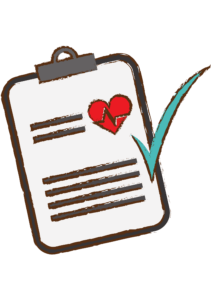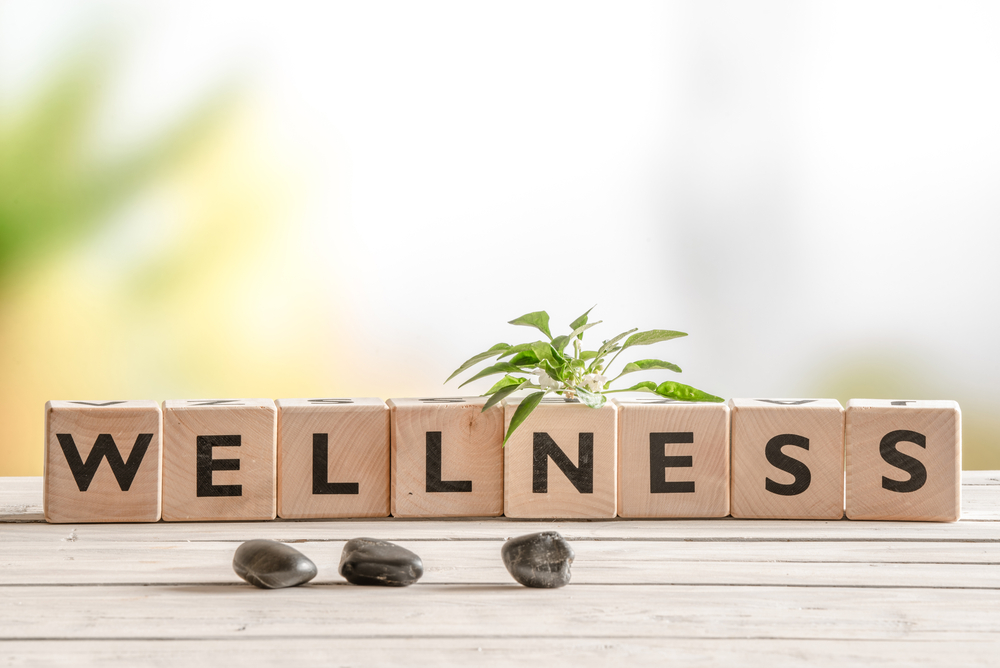How Much Water Should You Drink a Day and How to Track It?

Some of the links in my blogs may be affiliate links. See my disclaimer page for more information.
You know it is important to drink water for your health. (Just to be clear on all those benefits check out my blog post Benefits of Water). But how much water should you drink a day? How do you know when you’ve had enough?
There are at least four approaches to estimate how much water you should drink a day. Each of these is based on a relatively healthy, sedentary adult living in a temperate climate.
4 Scientific Approaches to How much water you should drink
#1 Replacement approach
The average urine output for adults is 1.5 liters a day. You lose close to an additional liter of water a day through breathing, sweating and bowel movements. Food usually accounts for 20 percent of your fluid intake, so you if you consume 2 liters of water or other beverages a day (a little more than 8 cups), along with your normal diet, you
can replace the lost fluids.
#2 Eight 8-ounce glasses of water a day
Another approach to water intake is the “8 x 8 rule” — drink eight 8-ounce glasses of water a day (about 1.9 liters). The rule could also be stated, “drink eight 8-ounce glasses of fluid a day,” as all fluids count toward the daily total. Though this approach isn’t supported by scientific evidence, many people use this basic rule as a guideline for how much water to drink.
#3 Dietary recommendations
The Institute of Medicine recommends that men consume about 13 cups of total beverages a day and women consume 2.2 liters (about 9 cups) of total beverages a day. These guidelines are based on national food surveys that assessed people’s average fluid intakes.
#4 Half Your Body Weight
This is the one I actually go by. It was what I learned to be the most accurate in my nutrition classes.
You can choose any of these fluid intake approaches to gauge how much water to drink. Your current total fluid intake is probably OK if you drink enough water to quench your thirst, produce a colorless or slightly yellow normal amount of urine, and feel well.
Factors that influence water needs
You may need to modify total fluid intake from these recommended amounts depending on several factors, including how active you are, the climate, your health status, and if you’re pregnant or breast-feeding.
1. Illnesses or health conditions. Some signs and symptoms of illnesses, such as fever, vomiting and diarrhea, cause your body to lose extra fluids. To replace lost fluids, drink more water or oral rehydration solutions (Gatorade, Powerade, CeraLyte, others). When water loss can’t be replaced orally, intravenous water and electrolytes may be necessary. Increased water intake is nearly always advised in people with urinary tract stones. On the other hand, you may need to limit the amount of water you drink if you have certain conditions that impair excretion of water — such as heart failure and some types of kidney, liver, adrenal and thyroid diseases.
2. Environment. You need to drink additional water in hot or humid weather to help lower your body temperature and to replace what you lose through sweating.
3. Exercise. If you exercise or engage in any activity that makes you sweat, you’ll need to drink extra water to compensate for that fluid loss. Drink 2 cups of water two hours before a long endurance event, for example, a marathon or half-marathon. One to 2 cups of water is also adequate for shorter bouts of exercise. During the activity, replenish fluids at regular intervals, and continue drinking water or other fluids after you’re finished.
I have tried many different ways to track my water and most just don’t work for me, but I will share them all in case they work for you.
- Pen & Paper- Check boxes, tally marks, or check marks
- Water bottle with markings on the side-this will work to measure your water, but you will still have to write down how many total or just remember.
- Rubber bands or elastics on your wrist-You can put one for each cup of water you need to drink and transfer it to the other wrist, to the water cup or just take it off every time you finish a cup.
- Fill a gallon jug or some other container with the amount you want to drink each day and when it is empty you know you got in your water goal. You can also measure that container in case you don’t finish you will still know how much you drank.
- Keep track in the notes section of your phone.
- Get a Smart Water bottle that tracks it for you and syncs to an app like this one: H2OPal Smart Bottle Hydration Tracker
- Use an app to not just keep track of how much water you are drinking but also remind you to drink water. I am using the app called My Water it is free on IOS, but does have an upgrade option for a one time fee of $3.00 so you get no ads, and can record yesterday’s if you miss it too. You can have friends on the app too, but haven’t looked into that yet.

In How to Drink More Water Part 1 I talked about the benefits of water, tomorrow I will show you ways to help get in all your water, and Part 4 will be infusing and enhancing your water to make it tastier.







